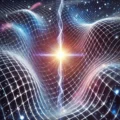Summary
The traditional Newtonian model treats the center of mass of a system as the effective point of gravitational attraction. This assumption simplifies computation and aligns with the shell theorem under ideal conditions (e.g., perfect spheres with uniform mass distributions). However, this shortcut obscures the fact that the center of attraction—the effective locus of force under an inverse square law—does not precisely coincide with the geometric center of distributed mass when considering the gravitational interactions of discrete bodies.
Observation
In systems of two or more discrete masses, gravitational force is determined pairwise, with each mass exerting force according to its distance from every other mass. Due to the inverse square nature of the force, the closer masses exert disproportionately stronger attraction, skewing the net force center inward, toward regions of higher density or closer mass pairings. This results in the center of gravitational attraction shifting inward relative to the center of mass.
Consequence
This deviation challenges the notion that gravity from extended bodies can be accurately modeled by reducing them to mass points at their centroids. The discrepancy becomes especially relevant at smaller scales or in systems where non-uniform density and proximity dominate the dynamics (e.g., early-universe clumping, galaxy formation, or composite spacecraft structures). While small in some configurations, the error becomes cumulative in many-body systems or where coherence and alignment matter.
Historical Parallel
Newton’s gravitational model succeeded in describing planetary motion but sidestepped this granularity through the abstraction of spheres and uniformity. The error here isn’t in the math—it’s in overextending the conditions under which the math is assumed to be exact.
Proposed Correction
Model gravitational interactions as the sum of all individual inverse-square attractions between mass elements, rather than as single-point interactions at the center of mass. This restores physical precision and opens the door for new gravitational phenomena to emerge from structure-dependent asymmetries.
Implications
- Could explain anomalous orbital behaviors not accounted for by dark matter.
- May revise gravitational potential models in tightly packed multi-body systems.
- Offers a testable difference from classical predictions in carefully designed laboratory mass configurations.
This discrepancy challenges the reductionist treatment of extended bodies in gravity modeling. It suggests the need to evaluate gravitational force as the sum of individual pairwise interactions, especially in high-density or asymmetric systems.
Reference
